Disclosure: We may earn commissions if you purchase products after clicking on a link from our site.
Do you want to know how to hunt a food plot? Would you like to be successful when hunting plots? If you have planted a food plot and it is time to hunt, having the right knowledge of how to hunt the food plot will make you more successful. In this article, we share information on how to hunt food plots the right way.
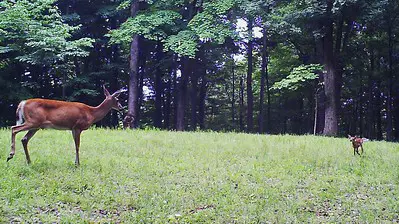
Table of Contents
How To Hunt A Food Plot
Hunt the Afternoons, Not the Mornings
The best time of the day to hunt food plots is in the afternoons. Hunting a food plot in the afternoon allows you to get there early and set up. This will not interfere with the deer’s movements. If you go to the food plot in the morning, there is a high chance that you will scare off deer that are already in the food plot.
Avoiding early morning hunting of food plots helps to reduce hunting pressure on the food plot. Moreover, deer tend to leave food plots before the shooting light appears but will come back into the food plot while the sun is still up.
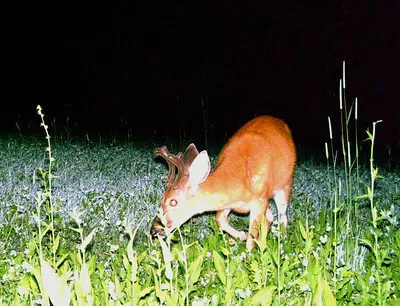
Overhunting Food Plots
One of the mistakes deer hunters make is to hunt a food plot too often. You planted a successful food plot, observed that it is attracting deer and now you think that all of your problems with hunting deer are now solved with the food plot. You only want to hunt deer in the food plot and not go out to hunt them. This is a mistake.
Instead, hunting food plots should be done sparingly. It will be more effective to hunt food plots lightly than to concentrate most of your deer hunting during the hunting season on the plots.
Moreover, another strategy to minimize hunting pressure on the plot is to be driven to and from the plot at the end of the legal shooting hours. This is also a good way to control your human scent in the plots.
Deer have a good sense of smell and you don’t want to alert deer to your presence. Spooking deer will keep them away from the plots during the day as they will remain in their bedding areas and come out when it is dark.
Hunting Mature Bucks
You will come to learn that it is mostly does and young bucks that will come to the food plot during the day. Mature bucks will not come during daylight hours. Instead, the big bucks will come to food plots when it is getting dark. They didn’t grow to be big bucks by accident. Big bucks learn well and fast to avoid hunters.
Some big bucks will even remain downwind and check for the scent of does without getting into food plots. When hunting food plots, it is a good strategy to set up in the woods and downwind of your food plot and you just might see bucks in the vicinity of your food plot that you may not see when you are set up near the edge of food plots.
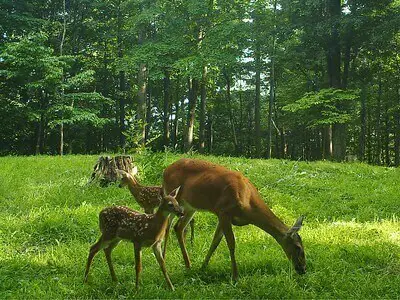
Early In The Morning
When hunting plots, it is good to set up back in the woods. This allows you to get into your hunting stand without clearing the food plots of deer and hunt the deer when they leave the food plot for their bedding areas.
Early morning hunting is not the best time for hunting deer and staying in the back of the woods to avoid spooking deer is a good strategy. If deer get spooked early in the morning, they will wise up and avoid the area and the plot for a long time.
Don’t Overshoot
It is very tempting to shoot too many whitetail deer on your plot. Don’t do it. There will be more opportunities to take down does on the plot, but don’t yield to that. If you take down too many deer on the plot, it will spook deer and they will avoid your plot during daylight hours and come when it is dark.
Additionally, the food plot may be part of a management plan to cull does. It can also serve to collect data for more research by wildlife biologists. Excessive shooting on the food plot will drive deer away and it may be very difficult to attract them back to the plot for a very long time.
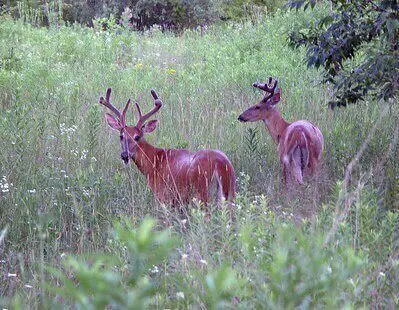
Set Up 2 Stands
When hunting plots, it is always a good strategy to set up a minimum of two stands. Have the stand location situated so that one is on the food plot and the other is off the plot. This gives you more options to hunt them without spooking the deer.
Additionally, two stands also help with the wind direction as they should be positioned so that they are in different directions with regard to the wind.
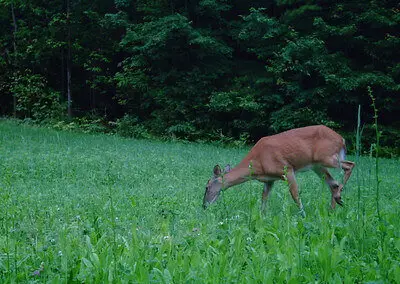
Wind Direction
The direction of the wind is very important when you set up your hunting stands. As stated above, you don’t want deer to pick up your human scent. Spooking deer is easy with human scent and they will leave the plot.
To avoid this, the stands must be set up in different directions so that if one is in the direction of the wind, you can hunt from the other and vice versa. Determining the direction of the wind is not difficult. You can use equipment, or a simple test is putting powder in the air and observing the direction that it will travel in.
When hunting, you always want to hunt downwind of the area where the deer may be located. This prevents the wind from taking your human scent to the deer. Learning how to determine the direction of the wind is one of the skills that every hunter should master.
Hunt Food Plots At Different Times of The Season
There will be a lot of deer activities on your plot during the early season. There will be many bucks feeding during shooting hours during the first few days of the season.
As the hunting season progresses, the pressure will only increase and there will be a drop in the number of bucks feeding in the plot. Hunting from the stands off the plot is the best strategy during this period of the season.
When hunting from a stand off the plot, you have the chance to intercept a buck coming from his bedding area to feed from the plot when it is dark.
During the rut, you can move to the stand on the plot as bucks will be hunting does that are feeding from the plot. During the late season, hunting over the plot is a good strategy.
During the winter months, when it is cold, you just might find bucks feeding on the plot as they will be looking for food during the cold months.
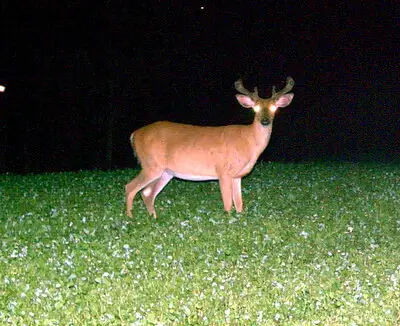
Trail Cameras
Setting up trail cameras on the plot can help you gather information about the deer that come to the plot, their movements, and when they arrive and when they leave. This information can help you plan your hunting strategy.
Trail cameras are very useful for deer hunters as they collect information 24 hours and seven days a week. It tracks deer movements, behavior, and other activities that can help you learn the best way to hunt them.
You might see a particular buck that comes to the plot at odd hours or late in the night when it is very dark to feed. This type of information will help you plan if you are interested in hunting the buck.
Additionally, you might figure out from the footage which direction the bedding areas are located. The trail cameras may capture footage of deer movements from bedding areas to the plot and from the plot back to the bedding area.
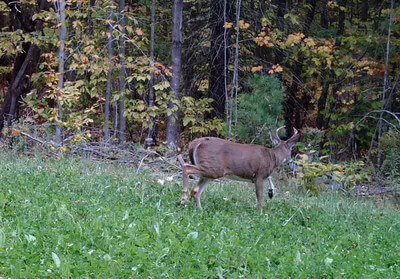
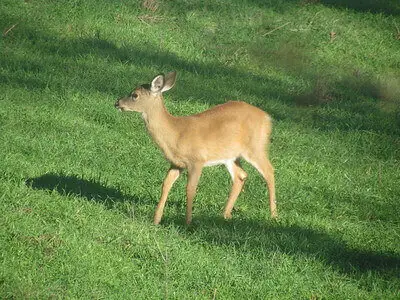
The Bottom Line
Hunting a food plot involves collecting information, observing deer movements, deer feeding, finding trail routes to and from the food plots, and understanding deer behavior during every phase of the season.
Setting up multiple stands, taking the direction of the wind into consideration, setting up trail cameras to collect information, and controlling your human scent are some of the things you have to do for a successful hunt of plots.
In this article, we discussed how to plant a food plot. You can also learn about the best deer food plot seeds and how to plant a food plot, and the best whitetail deer hunting tips, by reading these articles.